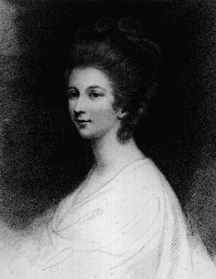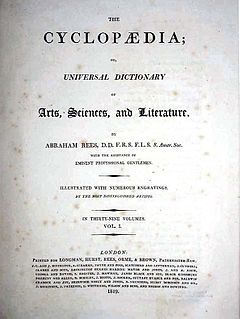
Robinson Crusoe is a novel by Daniel Defoe, first published on 25 April 1719. The first edition credited the work's protagonist Robinson Crusoe as its author, leading many readers to believe he was a real person and the book a travelogue of true incidents.

The History of Tom Jones, a Foundling, often known simply as Tom Jones, is a comic novel by English playwright and novelist Henry Fielding. It is both a Bildungsroman and a picaresque novel. It was first published on 28 February 1749 in London, and is among the earliest English prose works to be classified as a novel. It is the earliest novel mentioned by W. Somerset Maugham in his 1948 book Great Novelists and Their Novels among the ten best novels of the world. It totals 346,747 words divided into 18 smaller books, each preceded by a discursive chapter, often on topics unrelated to the book itself. It is dedicated to George Lyttleton.
A sequel is a literature, film, theatre, television, music or video game that continues the story of, or expands upon, some earlier work. In the common context of a narrative work of fiction, a sequel portrays events set in the same fictional universe as an earlier work, usually chronologically following the events of that work.
John Cleland was an English novelist best known for Fanny Hill: or, the Memoirs of a Woman of Pleasure. James Boswell called him "a sly, old malcontent".

The French Lieutenant's Woman is a 1969 postmodern historical fiction novel by John Fowles. It was his third published novel, after The Collector (1963) and The Magus (1965). The novel explores the fraught relationship of gentleman and amateur naturalist Charles Smithson and Sarah Woodruff, the former governess and independent woman with whom he falls in love. The novel builds on Fowles' authority in Victorian literature, both following and critiquing many of the conventions of period novels.

Charlotte Lennox, néeRamsay, was a Scottish author and poet, mostly remembered today as the author of The Female Quixote, and for her association with Samuel Johnson, Joshua Reynolds and Samuel Richardson. However, she had a long career in her own right, writing poetry, prose and drama.

Rees's Cyclopædia, in full The Cyclopædia; or, Universal Dictionary of Arts, Sciences, and Literature was an important 19th-century British encyclopaedia edited by Rev. Abraham Rees (1743–1825), a Presbyterian minister and scholar who had edited previous editions of Chambers's Cyclopædia.

John Murray is a British publisher, known for the authors it has published in its history, including Jane Austen, Sir Arthur Conan Doyle, Lord Byron, Charles Lyell, Johann Wolfgang von Goethe, Herman Melville, Edward Whymper, Thomas Malthus, and Charles Darwin. Since 2004, it has been owned by conglomerate Lagardère under the Hachette UK brand. Business publisher Nicholas Brealey became an imprint of John Murray in 2015.

A coffee table book is an oversized, usually hard-covered book whose purpose is for display on a table intended for use in an area in which one entertains guests and from which it can serve to inspire conversation or pass the time. Subject matter is predominantly non-fiction and pictorial. Pages consist mainly of photographs and illustrations, accompanied by captions and small blocks of text, as opposed to long prose. Since they are aimed at anyone who might pick up the book for a light read, the analysis inside is often more basic and with less jargon than other books on the subject. Because of this, the term "coffee table book" can be used pejoratively to indicate a superficial approach to the subject.

The Norton Anthology of English Literature is an anthology of English literature published by the W. W. Norton & Company. First published in 1962, it has gone through ten editions; as of 2006 there are over eight million copies in print, making it the publisher's best-selling anthology. M. H. Abrams, a critic and scholar of Romanticism, served as General Editor for its first seven editions, before handing the job to Stephen Greenblatt, a Shakespeare scholar and Harvard professor. The anthology provides an overview of poetry, drama, prose fiction, essays, and letters from Beowulf to the beginning of the 21st century.
The three-volume novel was a standard form of publishing for British fiction during the nineteenth century. It was a significant stage in the development of the modern novel as a form of popular literature in Western culture.
Penelope Aubin was an English novelist, poet, and translator. She published seven novels between 1721-28. Aubin published poetry in 1707 and turned to novels in 1721; she translated French works in the 1720s, spoke publicly on moral issues in 1729, and wrote a play in 1730. Aubin died in April 1738, survived by her husband until his death in April 1740. After the author's death, her works were gathered and published as A Collection of Entertaining Histories and Novels, Designed to Promote the Cause of Virtue and Honor. After the 18th century, Aubin's works fell out of favor with readers because of her writing style and unbelievable plots.

Jane Collier's and Sarah Fielding's The Cry: A New Dramatic Fable (1754) was Fielding's sixth and Collier's second and final work. The work is an allegorical and satirical novel. Collier and Fielding had worked together previously when Fielding wrote The Governess and when Collier wrote An Essay on the Art of Ingeniously Tormenting, but The Cry is the only work that can be positively ascribed to the two together. Collier died the year after its publication.
Phebe Gibbes was an 18th-century English novelist and early feminist. She authored twenty-two books between 1764 and 1790, and is best known for the novels The History of Mr. Francis Clive (1764), The Fruitless Repentance; or, the History of Miss Kitty Le Fever (1769), and The History of Miss Eliza Musgrove (1769). She received recent attention with the scholarly publication of Hartly House Calcutta (1789) in 2007.

A novel is a relatively long work of narrative fiction, normally written in prose form, and which is typically published as a book. The present English word for a long work of prose fiction derives from the Italian novella for "new", "news", or "short story of something new", itself from the Latin novella, a singular noun use of the neuter plural of novellus, diminutive of novus, meaning "new". Walter Scott made a distinction between the novel, in which "events are accommodated to the ordinary train of human events and the modern state of society" and the romance, which he defined as "a fictitious narrative in prose or verse; the interest of which turns upon marvellous and uncommon incidents". However, many such romances, including the historical romances of Scott, Emily Brontë's Wuthering Heights and Herman Melville's Moby-Dick, are also frequently called novels, and Scott describes romance as a "kindred term". This sort of romance is in turn different from the genre fiction love romance or romance novel. Other European languages do not distinguish between romance and novel: "a novel is le roman, der Roman, il romanzo, en roman." Most European languages use the word "romance" for extended narratives.
Caroline Burney was the probably pseudonymous author of two early 19th-century three-volume novels published in London: Seraphina (1809) and Lindamira (1810). Her identity has not been discovered.

Scottish literature in the eighteenth century is literature written in Scotland or by Scottish writers in the eighteenth century. It includes literature written in English, Scottish Gaelic and Scots, in forms including poetry, drama and novels. After the Union in 1707 Scottish literature developed a distinct national identity. Allan Ramsay led a "vernacular revival", the trend for pastoral poetry and developed the Habbie stanza. He was part of a community of poets working in Scots and English who included William Hamilton of Gilbertfield, Robert Crawford, Alexander Ross, William Hamilton of Bangour, Alison Rutherford Cockburn, and James Thompson. The eighteenth century was also a period of innovation in Gaelic vernacular poetry. Major figures included Rob Donn Mackay, Donnchadh Bàn Mac an t-Saoir, Uillean Ross and Alasdair mac Mhaighstir Alasdair, who helped inspire a new form of nature poetry. James Macpherson was the first Scottish poet to gain an international reputation, claiming to have found poetry written by Ossian. Robert Burns is widely regarded as the national poet.
Edward Kimber (1719–1769) was an English novelist, journalist and compiler of reference works.

The Adventures of Rivella (1714) is the last novel written by eighteenth century English author Delarivier Manley. The work is a semi-autobiographical account of Manley's life seen through the fictional character of Rivella. Delarivier Manley's final novel, which was later edited and published by Edmund Curll, is centred around her life before, during, and after her treacherous marriage. The events and incidents incurred by the fictional character Rivella are narrated to the reader through a conversational dialogue between two male protagonists, being Sir Lovemore and Sir D'Aumont. The narrative tells that the young chevalier D'Aumont has left France in search of sexual partnership with Rivella and instead finds the rejected lover, Sir Charles Lovemore who does not assist the Frenchman in arranging contact with Rivella, but tells her life story instead, both as it relates in public gossip and her personal writings.












